Patrick’s Parabox and Its Recursive Puzzles
Patrick's Parabox is the kind of game that can make you feel dumb, smart, and then dumb again, all in the span of a few minutes

Patrick's Parabox is a a deceptively simple looking puzzle game made by Patrick Traynor, and with music by Priscilla Snow. Released on March 29th, there are versions for Linux, Mac, and Windows.
If you thought that my last game article being about a pink ball and this one being a pink square is a coincidence... then you're actually right, it's just that. While Kirby has several puzzle games available, they aren't all that common these days. And the character's color slowly changes over time as well.

Parabox has a bit over 350 levels (plus custom ones), and each can be completed in a few seconds - if you know the solution. Otherwise, it will usually take anywhere from a few minutes all the way to a really long time, depending on your skills. The levels act as building blocks for the next levels, with new concepts being introduced on each new level.
At its core, it's a box pushing game where your character is a box of sorts too, and it happens inside a box as well. The boundaries of the level are contained within your screen, which doesn't actually mean can see the whole level at once, as certain areas of the level will be small until you enter them.
The game has a grid-based movement system: you can just move up, down, left, and right. If something is in the middle, then you push it as you move, and while you can push you can't pull - but you have a button to undo movements. Each level will have outlines - outlines for boxes, and/or an outline for you - after everything is in place, you'll move to the next level.
But after you beat a few levels, you'll see boxes inside the level where you and other boxes can enter if you are pushing against a direction in which said box can't move, and the box has an entry on that side. Boxes can have just one entry or several, and there are no special conditions for leaving them - as long as the path isn't blocked, you can leave it.

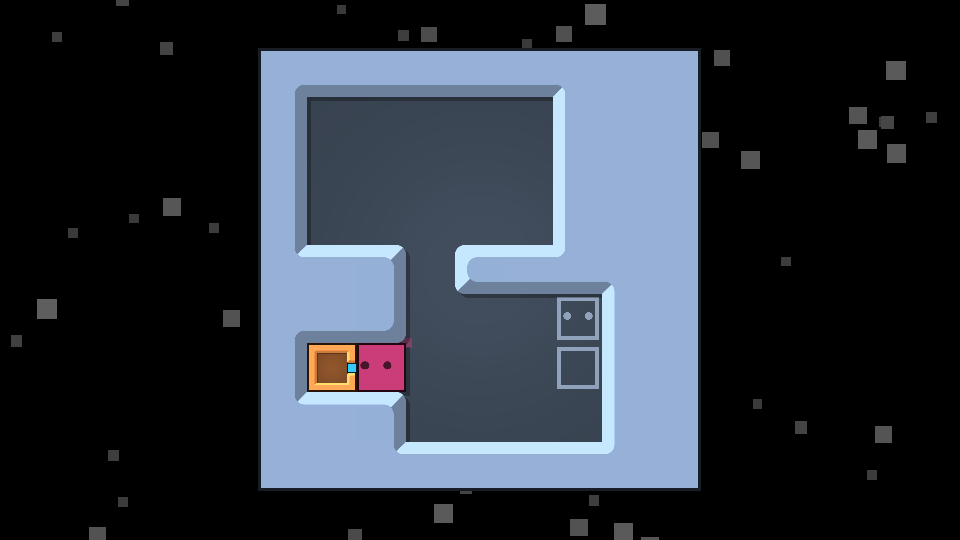

Screencap by author.
In order to avoid confusion, I'll call "normal" boxes squares, and the boxes you can enter boxes.
The longer the game goes, the more complex the levels get. You can get levels with several boxes, and yes, you can put boxes inside boxes. Not only that, but at some point, you'll get boxes that are actually the level itself - recursive boxes. These levels technically have an exit, just like the boxes have entries, but said exits will transport you inside the box - while exiting the box will put you in a space adjacent to it. Just bear in mind that when you push something into a box, it will enter from the center of the row or column you're pushing towards.
Also, in some levels where you get recursive boxes, the layout will allow you to push the box outside itself. This will make the level into the void (which has its own boundaries) with the pushed-out box gaining an infinite symbol. While doing this will make levels unfinishable at the start, this mechanic will actually gain its own use later in order to finish the puzzles.
The mechanics don't stop there, and you'll get "clone" boxes that essentially act as one-way portals, levels where it actually matters the way you leave a box, clones that actually act as mirrors, and more. Each area is focused on a given kind of puzzle, and while some are natural iterations from previous areas, the game kept surprising me again and again with new twists.
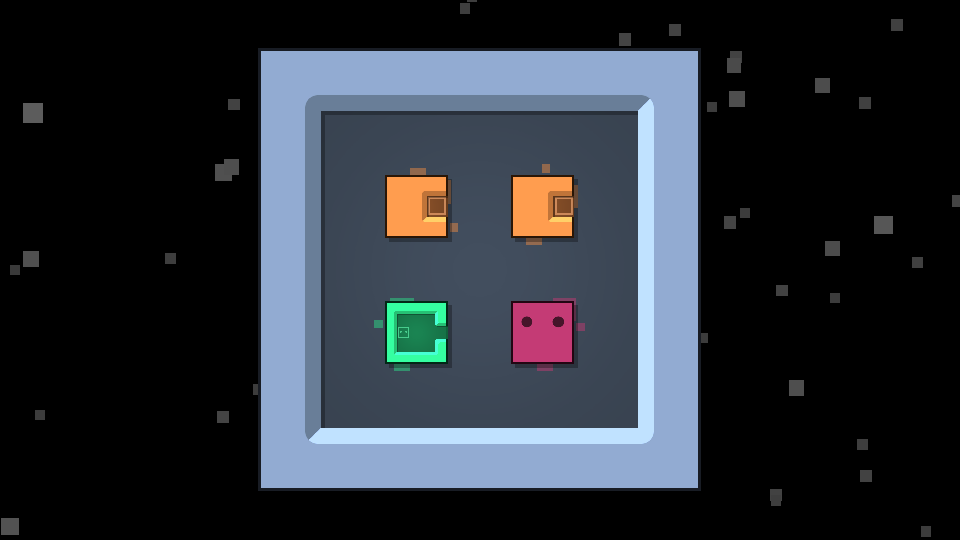

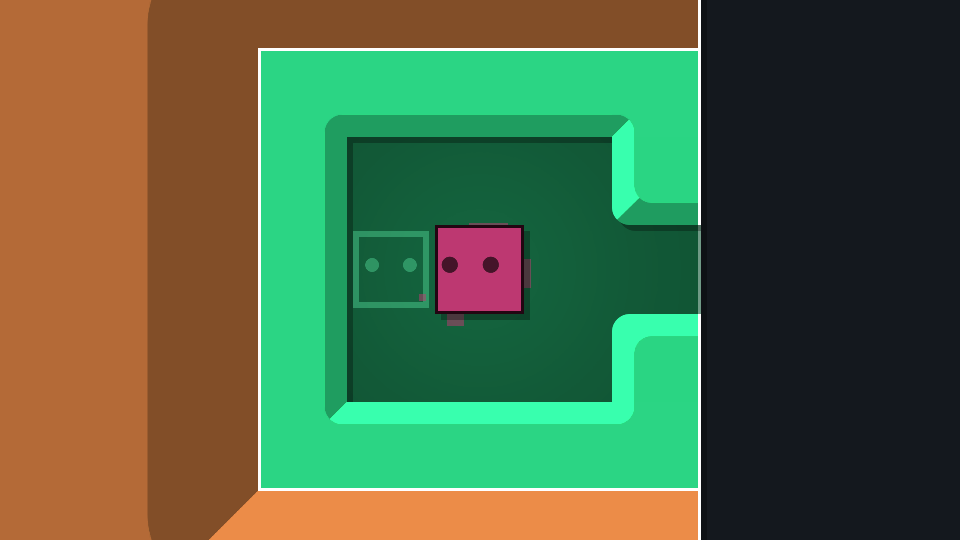
Boxes inside Boxes inside Boxes. Screencap by author.
The level selection is a box too. After you are done with an area you have to enter another box in order to get to the next one, a nice little detail that I love. Areas have levels that depend on clearing previous levels, with some branching paths and a minimum level-clear requirement in order to unlock the next area.
This means that you can get stuck in some levels without being blocked from entering new areas, something that might come in handy as the difficulty ramps up throughout the game. And you actually have the option to unlock all levels if absolutely required.
The game features some calming music which changes along with the areas and minimalistic graphics that let you focus on the gameplay. Focus you'll need, as even though the levels are short, the way to beat them might not be straightforward.
A handful of levels use even simpler graphics, a subset of which is a Roguelike ASCII. These happen very infrequently (besides 3 post-game levels that unlock at the same time) so it can be seen as a small shake-up to keep some variety, and I actually wouldn't have minded if they happened a bit more often.
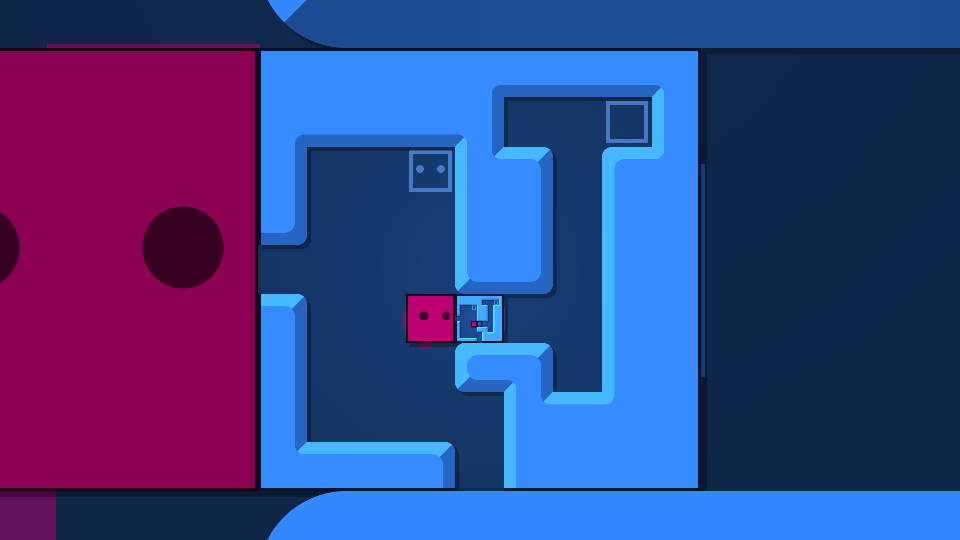
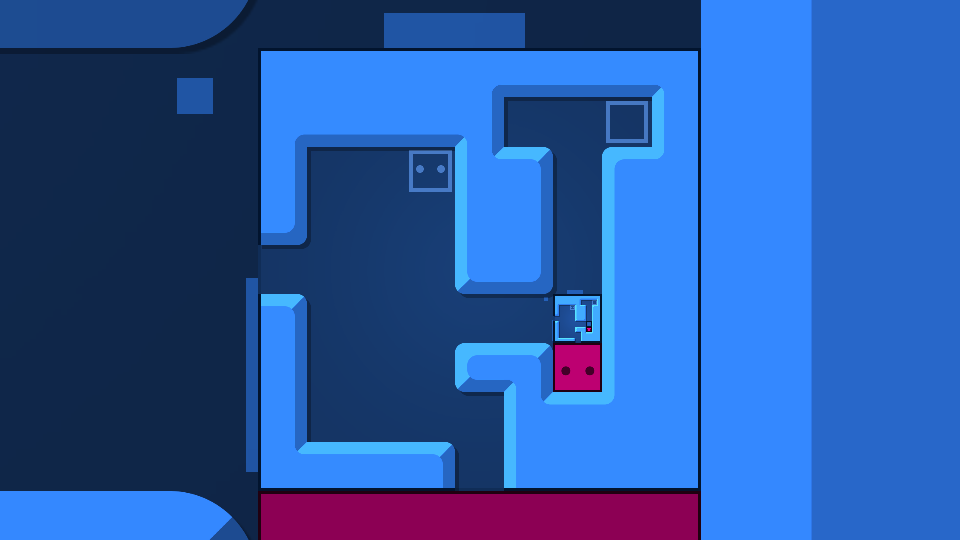
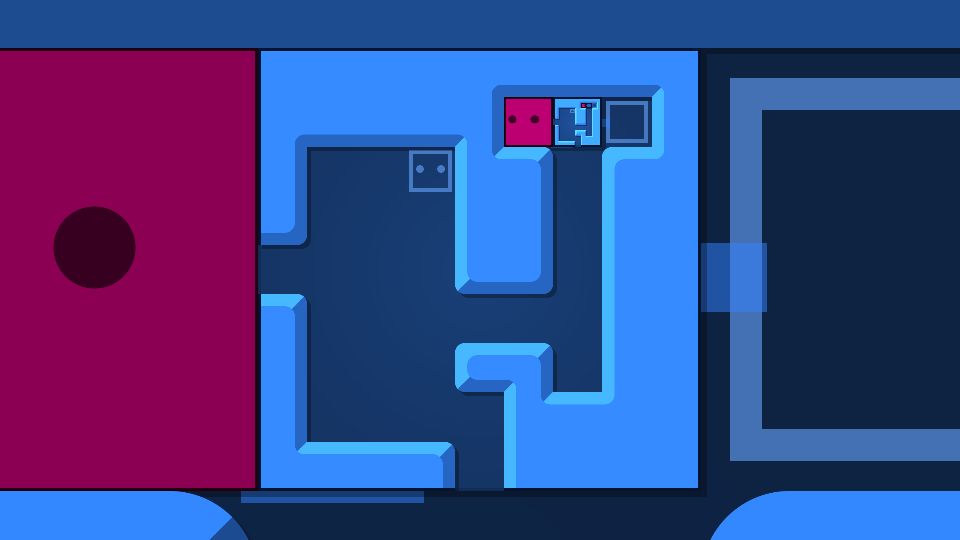
You looking at you looking at you. Screencap by author.
Parabox also lets you undo and redo actions immediately, as well as giving you the ability to reset the level, so you don't feel punished if you ever decide to experiment and make a mistake in the process.
This game can last you several hours, but as always, it's hard to determine the length of puzzle games, since it depends so much on the person. As far as difficulty goes, it depends a lot on your goal: the game isn't easy, but if you're just looking to get to the credits, it's more than doable. If you want to beat everything, though, be prepared to roll up your sleeves, because you'll be facing a tough challenge.
You might be able to finish a level almost instantly or have to sit awhile and experiment until you get that Eureka! moment that lets you progress. It's the kind of thing that can make you feel smart for solving the puzzle, or make you feel dumb for not figuring it out faster.
Conclusion
Patrick's Parabox shines thanks to its clever puzzles. Going for many small levels rather than a few big levels means it's perfect for playing a few minutes at a time and moving on to something else. Along with the corrective options you have, it really feels like the developer wants you to play and enjoy their game, rather than basking in players' mistakes and suffering - but that doesn't mean you won't find mind twisters here, because there are plenty.
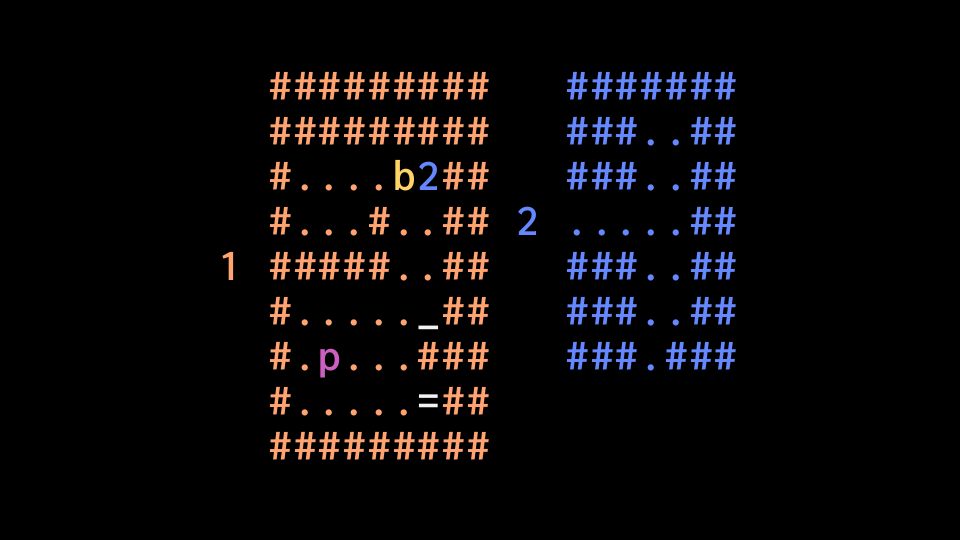


Screencap by author.
